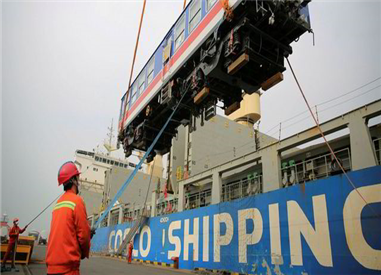 Signs of optimism for shipping as China starts to get back on track
Signs of optimism for shipping as China starts to get back on track
Coronavirus has hit all sectors, but whereas cruise and offshore have been left reeling, bulker and tanker owners have cautious reason for hope
An upsurge in Chinese port calls could represent the green shoots of recovery. Figures published by shipbroker Clarksons suggest the world’s second-largest economy is getting back to work after the initial phase of the coronavirus outbreak.
If the shipping movements continue to rise, it will suggest the worst is over in China. This will be good news for shipping and give hope to the US and Europe, which are facing the beginning of their own health emergencies, that things could be back to something like normal in two months.
Dry bulk shipowners are already more optimistic. The Baltic Dry Index has bounced back from the catastrophic low of 431 points recorded in mid-February. On Tuesday, it reached 623, propelled largely by smaller handysize vessels rather than larger capesize tonnage.
Still, no one will underestimate the scale of the Covid-19 disruption in the Far East, which led to lockdown in the Chinese city of Wuhan and the closure of shipyards.
Worrying Chinese statistics
China’s retail sales dived 20% in the first two months of the year, while industrial output slowed at its fastest rate since records began. Urban unemployment grew at its fastest-ever rate last month, according to official statements from Beijing.
But Chinese manufacturers will also awake to a slowdown in demand from export markets in Europe and the US, as those regions face the oncoming pandemic.
The US and European central banks have been cutting rates and promising financial help to stricken businesses. Denmark is pledging to pay up to 75% of employee wages rather than see workers laid off. The French government also said it will try to ensure there are no business failures.
Clarksons is still predicting that coronavirus will reduce dry bulk trade growth by 0.7% on an annualised basis. However, the sector is in better shape than it was, partly because of the very high levels of scrapping — up by around 150% year on year.
The cruise industry has been the chief financial victim of the pandemic so far, given the terrible spread of infection on board the 107,500-gt Grand Princess (built 1998) and the long-term quarantine of the 115,900-gt Diamond Princess (built 2004).
This sector has now in effect run aground, with Carnival Corp, Royal Caribbean Cruises and others tying up their fleets in port. More than $50bn has been wiped off leading cruise company share prices. So it is no wonder the launch of Sir Richard Branson’s new cruise venture has been put back.
On Monday, Wall Street suffered its worst fall since the Black Monday crash of 1987, with shipping shares in the firing line.
The S&P 500 stock market index was down 12%, losing an astonishing $2.7trn even though the US Federal Reserve cut interest rates to zero last weekend.
Investors are nervous that the coronavirus shock could trigger a global recession as well as wipe out some leisure and consumer companies.
Frayed nerves have not been strengthened by the decision by Russia and Saudi Arabia to launch an oil price war. The resultant 30% collapse in crude prices has led to bottles of bubbly being cracked in the tanker market as demand for cheap oil rocketed.
Investors spooked
Lower energy costs are arguably just what the world needs at a time of economic slowdown, but the unexpected nature of the decisions by Russia and Saudi Arabia to open up the production taps alarmed investors.
Tanker stocks have been slightly insulated from the wholesale slaughter of cruise companies on the stock market. They have been helped by the huge surge in freight rates that has seen VLCCs obtain hire rates of $250,000 per day and suezmaxes hit $150,000 per day.
As Frontline chief executive Robert Hvide Macleod put it so graphically: “The world is falling apart, it seems. In the tanker market, it’s just the opposite.”
The flipside is the position in the offshore sector. Here, stock of support vessel owners has been hammered amid expectations that $30-per-barrel oil prices will lead to huge cutbacks in exploration and production.
World gas prices are also at a low ebb, leaving listed owners of LNG ships down on their luck.
Coronavirus has seen business and governments working together round the world to mitigate the worst effects of this “black swan” event, but the crisis still has a way to run.
Today's Bunker Prices:




